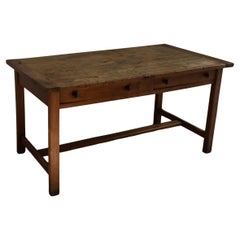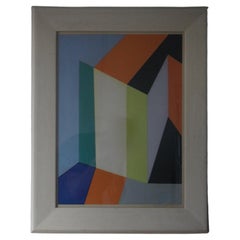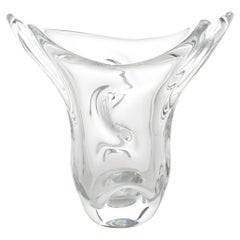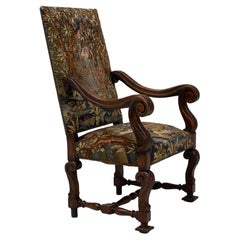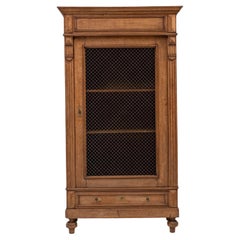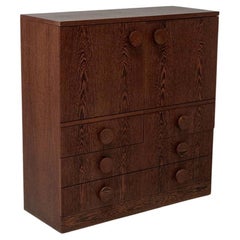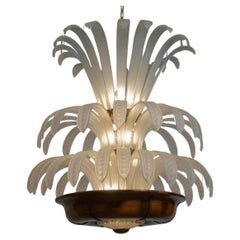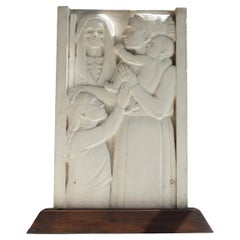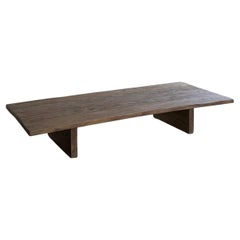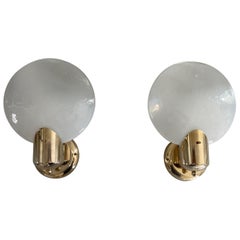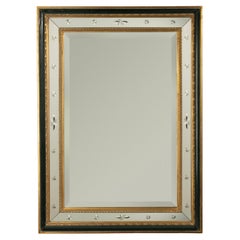Belgian Furniture
to
957
6,166
1,753
5,602
2,237
209
1,515
958
654
270
215
129
83
63
57
53
47
43
31
29
20
15
10
8
409
617
4,576
2,446
732
2,192
1,229
92
46
217
365
110
404
615
795
194
90
3,190
2,607
1,277
1,079
1,006
9,211
569,206
167,858
165,872
137,543
8,048
6,428
6,757
296
279
118
95
93
Place of Origin: Belgian
Belgian Wengé Bar Cabinet
Located in Los Angeles, CA
Dimensions: 46.1"w x 17.7"d x 47.6"h
Material: Wenge
Belgium, c1980s
VNT1724
Category
1980s Mid-Century Modern Vintage Belgian Furniture
Materials
Wenge
1920s, Original Art Deco Palm Chandelier , Belgium
Located in Silvolde, Gelderland
Original 1920s Belgian chandelier in complete and authentic condition, crafted in the Art Glass tradition. This exceptional piece features delicately molded frosted glass elements ar...
Category
1920s Art Deco Vintage Belgian Furniture
Materials
Art Glass, Walnut
Spherical bas-relief in plaster by Geo Verbanck, Belgium, 1920s
Located in EVERDINGEN, NL
A rare and monumental plaster bas-relief by Belgian sculptor Geo Verbanck (1881–1961), signed lower right and mounted on a custom walnut base. Dating from the 1920s, the relief is co...
Category
1920s Art Deco Vintage Belgian Furniture
Materials
Plaster
Simplistic Coffee Table in 18th C Oak Wood
Located in Nijlen, BE
Minimalist coffee table.
Made from 18th-century beams.
Natural color and treated for a soft, water-resistant surface.
A piece that exudes simplicity and fits seamlessly into a balan...
Category
2010s Minimalist Belgian Furniture
Materials
Oak
Pair of Sconces by Boulanger in Hand-blown Glass and Brass, 1960s, Belgium
By S.A. Boulanger
Located in Hagenbach, DE
Pair of Sconces by Boulanger in Hand-blown Lens-shaped Glass and Brass, 1960s, Belgium
Elegant rare high quality wall lamps.
Lamps are in very good vintage condition.
Wear consiste...
Category
1960s Mid-Century Modern Vintage Belgian Furniture
Materials
Metal
Mid Century Mirror - Wood Frame - Green and Gilt - Star Etched Glass
Located in Casteren, Noord-Brabant
Elegant mid century mirror from the 1960s-70s, featuring a beautifully patinated wooden frame in deep green and gilt tones. The mirror glass is decorated with finely etched stars, ad...
Category
1960s Mid-Century Modern Vintage Belgian Furniture
Materials
Glass, Wood
Stunning Mid Century Cabinet in Brass, Metal, Enamel and Gemstones Belgium 1960s
By Paul Evans
Located in Meer, VAN
Stunning Mid Century Cabinet in Patinated Brass, Metal, Enamel and Gemstones Belgium 1960s
A breathtakingly beautiful decorative cabinet in metal, brass, enamel and gemstones. Belgi...
Category
Mid-20th Century Mid-Century Modern Belgian Furniture
Materials
Metal, Brass, Enamel
Belgian Linen Aloutte Pillow with Stripes Includes Down Feather Insert
By Bloom Home Inc
Located in Old Town Orange, CA
Experience the ultimate in comfort and style with our high-quality pillow covers, designed to elevate your home decor to the next level. Made from the finest materials and crafted wi...
Category
21st Century and Contemporary Belgian Furniture
Materials
Linen
Early 20th Century Art Deco Terracotta Bust of Man - Johannes Dommisse
Located in Casteren, Noord-Brabant
Striking Art Deco terracotta bust, beautifully patinated in deep green tones, depicting a strong male portrait with a dynamic, expressive profile. The sculpture captures both vitalit...
Category
1920s Art Deco Vintage Belgian Furniture
Materials
Belgian Black Marble
Padorian Bronze Glass Bowl
Located in Paris, FR
Bowl Padorian Bronze Glass with all structure in
handcrafted glass with top in bronzed finish.
Category
21st Century and Contemporary Belgian Furniture
Materials
Glass
$2,741 / item
set of architectural dining chairs by Jean Batenburg for MI, Belgium 1970
Located in Antwerpen, Antwerp
Set of six dining chairs designed by Jean Batenburg for MI, Belgium, in the 1970s. Produced for only a short time, they are now hard to find. The chairs have a strong, architectural ...
Category
1970s Mid-Century Modern Vintage Belgian Furniture
Materials
Leather, Wood, Plywood
Rare Gothic Oak Panel Carved With Vine And Grape Cluster Motif, Circa 1320–1400
Located in Bilzen, BE
"Rare Gothic Oak Panel Carved With Vine And Grape Cluster Motif, Circa 1320–1400"
Rare Gothic Carved Oak Panel with Vine & Grape Motif, c. 1320–1400
This exceptional carved oak panel is a fine example of pure Gothic design, originating from Northern Europe—most likely Flanders, northern France, or England—and dating to the early–mid 14th century.
The panel is richly carved in openwork with an interlacing vine scroll bearing clustered grapes, a motif strongly associated with medieval Christian symbolism, representing the Eucharist and the “True Vine” of Christ. The design is entirely Gothic in conception, free of any later Renaissance influence, with flowing, organic tracery rather than strict symmetry.
A rectangular mortise is present to one side, indicating that the piece originally formed part of a cabinet or small door—possibly from a church sacristy...
Category
15th Century and Earlier Gothic Antique Belgian Furniture
Materials
Wood
Antique European Belgian Cabinet Blonde Solid Oak All Keys
Located in Somis, CA
An exceptionally beautiful piece, this two-tiered European cabinet is a testament to timeless craftsmanship and artistic beauty. Carved from solid oak, its stunning blonde and light ...
Category
Early 20th Century Belgian Furniture
Materials
Oak
$1,760 Sale Price
20% Off
White opaline Art Deco Flush Mounts
Located in Amsterdam, NL
1920s White opaline Art Deco Flush Mount
Metal glass holder with white porcelain bulb holder
Diameter glass holder 14 cm / 5.5 inches
Weight: 1.20 k...
Category
1620s Art Deco Antique Belgian Furniture
Materials
Brass, Iron
$335 / item
Important Historical Tapestry Brussels– Cyrus the Great – 17th Century - No 1534
By Brussels Manufactory
Located in Paris, FR
Very Important & Great Tapestry Historical & Biblical by Brusseles Manufactury in 1680th
Period: 17th century
Condition: Excellent
Material: Wool & Silk
Width: 375 cm
Height: 325 c...
Category
17th Century French Provincial Antique Belgian Furniture
Materials
Wool, Silk
Art Deco Stained Glass Window
Located in Antwerp, BE
Art Deco hanging stained glass window a decorative linear symmetry with a mathematical and geometric touch. It’s dramatic, eye catching, and gives a distinct feel and flair to a room...
Category
1930s Art Deco Vintage Belgian Furniture
Materials
Art Glass
Belgian Leather and Metal Desk
Located in Bonita Springs, FL
Our Belgian Leather Desk, a seamless blend of craftsmanship and modern minimalism, this desk features a vegetable-tanned leather top, meticulously inlaid on a sleek steel base. The s...
Category
2010s Modern Belgian Furniture
Materials
Steel
$2,850 / item
Travertine Topped Belgian Coffee Table
Located in Los Angeles, CA
Travertine Topped Belgian Coffee Table
Dimensions: 51.5"w x 33.5"d x 13"h
Base: Oak
Stone Top: Turco Travertine
Belgium, c1970s
VNT1635
Category
1970s Mid-Century Modern Vintage Belgian Furniture
Materials
Travertine
17th Century Flemish Tapestry
Located in Los Angeles, CA
17th century Flemish Tapestry
Dimensions: 45"w x 85.5"h
Origin: Belgium
Material: Wool and silk
17th century
VNT1707
Category
17th Century Neoclassical Antique Belgian Furniture
Materials
Wool, Silk
Large space age desk designed by Frank De Clercq, Belgium 1972.
Located in Antwerpen, Antwerp
This large space age desk is dating is designed by Frank De Clercq in 1972. A minimalist yet modern design with a simple rectangular shape and rounded corners. The desk is build out ...
Category
1970s Space Age Vintage Belgian Furniture
Materials
Leather, Wood
Mid Century Wall Tapestry with Birds, Animals and Foliage Belgium 1960s
Located in Meer, VAN
Mid Century Wall Tapestry with Birds, Animals and Foliage Belgium 1960s
A wonderful mid century Belgian wall tapestry with birds. Great colors and design, with wonderful detailed de...
Category
Mid-20th Century Mid-Century Modern Belgian Furniture
Materials
Fabric
Gothic period carved oak panel, 14th - 15th century
Located in Bilzen, BE
A Flemish carved oak panel in reliëf from the Gothic period, 14th - 15th century
21.2 x 38.5 cm
Category
15th Century and Earlier Gothic Antique Belgian Furniture
Materials
Wood
Large Red Ceramic Mirror by Oswald Tieberghien, Belgium 1970s
By Oswald Tieberghien
Located in München, BY
A beautiful large round ceramic mirror by Oswald Tieberghien, Belgium, 1970s.
The red ceramic mirror is in very good condition with no damage. The mirror glass was replaced once and...
Category
1970s Mid-Century Modern Vintage Belgian Furniture
Materials
Ceramic, Mirror, Bentwood
Round Vintage Green Black Pouf Two-tone Skai Sixties
Located in Poperinge, BE
Cool vintage round patchwork-style ottoman, made from a wooden base and upholstered in high-quality two-tone green and black faux leather, manufactured in Belgium circa the 1960s.
A...
Category
1960s Vintage Belgian Furniture
Materials
Faux Leather, Wood
Petite Cute Starburst Sunburst Gilded Resin Convex Mirror Belgium, circa 1970s
Located in Nuernberg, DE
A petite starburst sunburst convex mirror. Made of gilded resin and wood. It measures approximate 9.5" in diameter, mirror itself is approximate 3.13" in diameter. It stands approxim...
Category
1970s Hollywood Regency Vintage Belgian Furniture
Materials
Mirror, Resin
French Porcelain Oyster Plate Limoges Circa 1900
By Limoges
Located in Austin, TX
French Porcelain Oyster Plate Limoges Circa 1900.
Category
Early 1900s Aesthetic Movement Antique Belgian Furniture
Materials
Ceramic, Porcelain
$280 Sale Price / item
20% Off
Long Leaf Glass Bowl
Located in Paris, FR
Bowl Long Leaf Glass all in glass in pale green
finish with gold finish edging all around the bowl.
Category
21st Century and Contemporary Belgian Furniture
Materials
Glass
$2,741 / item
Ceramic Large Tile Wall Mounted Sculpture Group of Women, Belgium 1960s
Located in Antwerp, BE
Impressive piece unique wall sculpture made in ceramic by hand formed in a local studio in Belgium in the mid sixties by an unknown artist.
Depicted is a group of women in special fa...
Category
1960s Mid-Century Modern Vintage Belgian Furniture
Materials
Ceramic
A Large Belgian Oak Carved Gateleg Table, C. 1950.
Located in Philadelphia, PA
A substantial and well-crafted Belgian oak gateleg table featuring a classic oval top with two drop leaves. The expansive surface is supported by a base composed of turned baluster l...
Category
Mid-20th Century Belgian Furniture
Materials
Oak
Two Arts & Crafts Nightstands by Gustave Serrurier-Bovy, 1900s
By Gustave Serrurier-Bovy
Located in Amsterdam, NL
Magnificent and rare pair of Arts & Crafts nightstands or bedside tables.Design by Gustave Serrurier-Bovy.Striking Belgium design from the 1900s.Solid American walnut frames with or...
Category
Early 1900s Arts and Crafts Antique Belgian Furniture
Materials
Marble
Val Saint Lambert blue cut-to clear Crystal ashtray, Signed
By Val Saint Lambert
Located in Delft, NL
Val Saint Lambert blue cut-to clear Crystal ashtray, Signed
A Belgium blue colored cut to clear crystal ashtray from Val Saint Lambert, Belgium, established since 1826.
The ashtray...
Category
Mid-20th Century Belgian Furniture
Materials
Crystal
Pair of Brutalist coffee tables in oak and slate. Circa 1960.
Located in Saint-Ouen, FR
Pair of Brutalist-style coffee tables, made of oak with slate tops (showing slight differences due to the natural material).
Belgian craftsmanship from the 1960s.
Dimensions: H 44 ...
Category
Mid-20th Century Belgian Furniture
Materials
Oak
A Belgian Maple Bakery Table / Work Table, C. 1930.
Located in Philadelphia, PA
A substantial Belgian bakery table / work surface in solid maple! The rectangular top features a raised gallery edge and rests atop four spacious drawers, providing excellent storage...
Category
Early 20th Century Rustic Belgian Furniture
Materials
Oak
Val Saint Lambert green cut-to clear crystal centerpiece fruit bowl, Signed
By Val Saint Lambert
Located in Delft, NL
Val Saint Lambert green cut-to clear crystal centerpiece fruit bowl, Signed
A Belgium large green colored cut to clear crystal centerpiece from Val Saint Lambert, Belgium, establish...
Category
20th Century Belgian Furniture
Materials
Crystal
1920s Art Deco white opaline glass pendant light
Located in Amsterdam, NL
1920s Art Deco white opaline glass pendant light
Brass top, 2 meter black wire
Weight 2.50 kg / 5.5 lb
Priced per individual item. All lamps have been made suitable by internationa...
Category
Early 20th Century Art Deco Belgian Furniture
Materials
Brass
Vintage Gold Frame Baroque Style Classic Pine Wood 87x77cm
Located in Poperinge, BE
Beautiful, partially gilded vintage pine frame with a lovely patina of age, entirely in classic Baroque style, decorated with acanthus leaves, flowers, and patterns, first half of th...
Category
1920s Baroque Vintage Belgian Furniture
Materials
Gesso, Wood
19th Century Majolica Oyster Plate Wasmuel
By Wasmuel Majolica
Located in Austin, TX
19th Century Majolica oyster plate Wasmuel (Belgium) decorated with flowers.
Category
1880s Aesthetic Movement Antique Belgian Furniture
Materials
Ceramic
$480 Sale Price / item
20% Off
Flemish Baroque Mirror with Mercury Glass
Located in Jesteburg, DE
Impressive Flemish Baroque period mirror. Nice spotty possibly original mercury glass mirror plate.
Good quality piece that has a great visual impact. Perfect in a modern or traditi...
Category
18th Century Baroque Antique Belgian Furniture
Materials
Softwood
Pierre Culot Stamped Large Ceramic, circa 1960, Belgium.
By Pierre Culot
Located in Brussels, BE
Pierre Culot large ceramic vide-poche, circa 1960, Belgium.
Brown enameled stoneware.
Stamped C.
Dimensions: 24 x 24 cm , 8 cm H.
Good original condition.
All purchases are covered ...
Category
1960s Mid-Century Modern Vintage Belgian Furniture
Materials
Stoneware
Willy Daro Bonsai Cocktail Table, Patinated Brass, Smoked Glass, Belgium, 1970s
By Willy Daro
Located in Palm Desert, CA
An exceptional and rare Bonsai cocktail table by Belgian designer Willy Daro, dating to the 1970s. This sculptural table features a hand-cast patinated brass base in the form of a st...
Category
1970s Mid-Century Modern Vintage Belgian Furniture
Materials
Brass
Newton Red Brown Side Table
Located in Paris, FR
Side Table Newton Red Brown with all
structure in stoneware in glazed finish.
Category
21st Century and Contemporary Belgian Furniture
Materials
Sandstone
$826 / item
pink ceramic walllight/sconce
Located in Brecht, BE
just love these elegant pink glazed ceramic wallights ... can be send to you, professionaly packed in a box ...
Category
21st Century and Contemporary Belgian Furniture
Materials
Ceramic
Original Vintage Travel Advertising Poster Brugge Bruges Concerts Of Carillon
Located in London, GB
Original vintage travel advertising poster issued by Belgian State Railways for music events in Bruges - Brugge Beiaard Concerten Concerts de Carillon Concerts of Carillon - held fro...
Category
1930s Vintage Belgian Furniture
Materials
Paper
Rare large early 19th century hand carved Neo-Gothic cupboard in oak
Located in Meulebeke, BE
Belgium / 19th Century / cupboard / oak / Neo-gothic / Antique
Flamboyant gothic style cupboard with 4 doors, handcrafted in Belgium. We found this exceptional piece in the Belgian...
Category
16th Century Gothic Revival Antique Belgian Furniture
Materials
Oak
Art Deco Ceiling Light Attributed to Val Saint Lambert
By Val Saint Lambert
Located in NANTES, FR
Large Art Deco ceiling light, circa 1930.
Nickel-plated bronze frame. Central molded glass pane attributed to Vals Saint Lambert.
4 sandblasted glass side panels.
In perfect conditio...
Category
Mid-20th Century Art Deco Belgian Furniture
Materials
Bronze, Nickel
Rare Grand 19th Century Belgian Louis XVI Fireplace in Royal Brown Marble
Located in Beervelde, BE
This authentic 19th century Belgian Louis XVI style fireplace surround is crafted from exquisite Belgian Royal Brown marble.
The Belgian marble is prized for its deep brown base inte...
Category
19th Century Louis XVI Antique Belgian Furniture
Materials
Marble
Set of 6 De Puydt Brutalist Heavy Oak And Rope Dining Chairs, 1950
By De Puydt, Adrien Audoux and Frida Minnet
Located in Vienna, AT
Set of Six (6) De Puydt Brutalist Heavy Oak Dining Chairs, 1950
Pair of armchairs, beech, rope hemp, France, 1950s.
Gorgeous set of 6 mid-century dining chairs in oak and rope hemp ...
Category
1950s Mid-Century Modern Vintage Belgian Furniture
Materials
Hemp, Rope, Beech
Gustave Serrurier-bovy (1858-1910) "moulin Clock" -1905
By Gustave Serrurier-Bovy
Located in Bilzen, BE
Gustave Serrurier-Bovy (1858-1910) Moulin Mahogany, brass, painted glass paste numbers
Creation date: 1905
H 59 CM XL 34 CM
Original movement, running
Bibliography: - Françoise Bi...
Category
Early 1900s Art Nouveau Antique Belgian Furniture
Materials
Brass, Iron
$10,775 / item
Modular leather sofa, manufactured by Durlet, Belgium, 1970s.
By Durlet
Located in Antwerpen, Antwerp
Modular leather sofa, manufactured by Durlet, Belgium, 1970s. The sofa consists of four seating elements, 2 two-seats and 2 one-seats. The elements can be attached to each other with...
Category
1970s Mid-Century Modern Vintage Belgian Furniture
Materials
Leather
Belgian, Val St. Lambert Crystal Bowl
By Val Saint Lambert
Located in Louisville, KY
From the world-renowned Belgian company, Val St. Lambert- supplier to the Royal Families, comes this beautiful Belgian crafted diamond patterned crystal bowl. More specifically, this...
Category
Late 20th Century Modern Belgian Furniture
Materials
Crystal
Charles Catteau for Boch Keramis Art Deco Vase with Stylized Swallows, Belgium
By Charles Catteau, Boch Freres Keramis
Located in Antwerp, BE
A beautiful rare Art Deco vase by Charles Catteau for Boch Frères Keramis. In very good condition. Decor D.3288, Signature Stamped.
Depictive with a repetition offour flying swallows...
Category
1920s Art Deco Vintage Belgian Furniture
Materials
Ceramic
Painting - Portrait of a Collie Dog - by Robert Detrixhe
Located in Casteren, Noord-Brabant
A beautiful painting, a portrait of Collie dog.
The painting was made by the Belgian artist Robert Detrixhe. The painter was born in 1935 and was particularly active at the end of th...
Category
1980s Modern Vintage Belgian Furniture
Materials
Paint
Art Nouveau wardrobe attr. to De Coene with artwork by Geo Verbanck, Belgium
Located in Meulebeke, BE
Belgium / 1905 / Wardrobe / De Coene/ Geo Verbanck / oak, copper / Art Deco / Art Nouveau
A stylish Art Nouveau wardrobe or armoire in solid oak most likely designed by De Coene, Ko...
Category
Early 1900s Art Nouveau Antique Belgian Furniture
Materials
Copper
1920s Charles Catteau (1880-1966) for Keramis Deer Vase
By Charles Catteau
Located in Minneapolis, MN
Here is a wonderful vase by Charles Catteau for Keramis, Belgium. The vase depicts a deer and foliage on both sides with a crackle glaze background. It is signed and numbered on the ...
Category
1920s Art Deco Vintage Belgian Furniture
Materials
Ceramic
1 of the 63 Art Nouveau Glazed Relief Tiles by Gilliot, circa 1920
By Gilliot
Located in Rijssen, NL
1 of the 63 handmade floral antique tiles wiht rich glazed colors. Manufactured around 1920 by Gilliot Hemiksem, Belgium.
Image on the tile in relief on light yellow ground. Very ni...
Category
Early 20th Century Art Nouveau Belgian Furniture
Materials
Ceramic
Set of 6 Dining Chairs in Solid Oak, Belgium, 1950s
Located in Lejre, DK
Impressive set of 6 dining chairs crafted in solid oak in the 1950s and produced in Belgium. Made to a very high standard, the chairs feature a bold design with sculptural backrests ...
Category
1950s Scandinavian Modern Vintage Belgian Furniture
Materials
Oak
Stunning Large Gold Sunburst Starburst Convex Mirror Belgium 1960s
Located in Nuernberg, DE
A gorgeous extraordinary starburst sunburst convex mirror. Made of gilded resin. No chips, no cracks, no repairs. It measures approximate: 20.75" in diameter, the mirror itself is ab...
Category
1960s Hollywood Regency Vintage Belgian Furniture
Materials
Mirror, Giltwood
Wiskemann Silver Plate Champagne Ice Bucket Wine Cooler, circa 1970
By Wiskemann
Located in Atlanta, GA
This Wiskemann modernist silver plate ice bucket or cooler is an exquisite piece of barware, circa 1970. Crafted by silversmith Wiskemann, Belgium, its distinguished design features ...
Category
1970s Modern Vintage Belgian Furniture
Materials
Silver Plate
19th Century Majolica Oyster Plate Wasmuel
By Wasmuel Majolica
Located in Austin, TX
19th Century Majolica oyster plate Wasmuel (Belgium) decorated with flowers.
Category
1880s Aesthetic Movement Antique Belgian Furniture
Materials
Ceramic
$480 Sale Price / item
20% Off
Contemporary Plaster Table Walnut Wood Base "Menhir" 280cm by Isabelle Beaumont
Located in Ranst, BE
A contemporary Belgian design, handcrafted in natural plaster with a textured, earthy character. The surface is stain-resistant, easy to maintain, and pleasantly soft to the touch, u...
Category
2010s Minimalist Belgian Furniture
Materials
Concrete, Cement, Composition, Limestone, Stainless Steel
Recently Viewed
View AllMore Ways To Browse
Antique Shoe Iron
Antique Silver Candle Sconce
Antique Spanish Trunk
Antique Tavern Sign
Antique Thangka Tibet
Antique Tiffany Mantel Clock
Antique Tiffany Mantel Clocks
Antique Tortoise Shell Glasses
Antique Wood Filing Cabinet
Antique Wooden Bow
Arch Top Window
Arched Double Doors
Art Deco Accent Cabinets
Asian Screen 6 Panel
Baccarat Dish
Baker Campaign Chest
Balinese Wood Carving
Ball And Claw Chest
